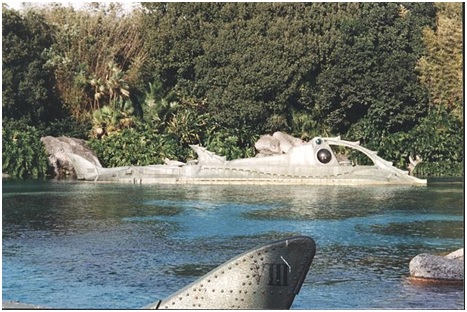Successful Encounter Design
What makes a good encounter? Memorable encounters are far more than a collection of stat blocks to be defeated and treasure to be looted (although great encounters often include both).
Thousands of words have been written about the mechanical aspects of encounter design – how to create balanced and appropriate challenges and rewards – but such considerations are extremely system dependent. For example, even though Pathfinder and 4e are similar games they approach these tasks in different ways. Underlying these considerations, however, lie fundamental aspects of encounter design relevant to every roleplaying game.
Context
Every encounter should fit within the context of the adventure, building toward a coherent whole. Encounters that jar players from their suspension of disbelief detract from adventures and often bring a session to a screeching halt.
When placing an encounter within an adventure, do not rely on overly long explanatory text that only the GM might see. If an encounter is odd in some way – say the PCs meet an opponent that seems strangely out of place – the PCs should be able to at least find clues that strongly hint at the reasons behind the creature’s presence. Without such clues, even though the encounter might make perfect sense to the GM, the encounter will make no sense to the players.
Purpose
Encounters need to move the adventure’s story forward in some way. Not every encounter has to reveal some major part of the plot or end with the demise of an important villain but they should give the PCs a sense of achievement. The exception to this is, of course, random encounters. Random encounters often add interesting variables to an adventure and are an essential part of the “Old School” feel. However, such encounters still need to make sense within the adventure’s overall framework.
Challenge
Not every encounter needs to end in combat, but every encounter should have some element of challenge. Whether it be bribing a guard to turn a blind eye, slaying raiding orcs or gathering information around town, encounters should focus on the PCs doing something (and hopefully succeeding).
Flavour
Flavour good, blandness bad.
Flavour is what elevates adventures from the humdrum to the awesome. Good adventures need flavour. In battle, do the orcs call out to a specific god or do the guards wear the livery of a certain lord? Describe the surrounding area whether it be a musty, forgotten tomb or the bustling streets of a metropolis. Without flavour, you might as well set your adventure in a series of featureless rooms populated solely by creatures whose sole purpose is to die on the PC’s blades.
Closing Thoughts
Successful encounter design is much, much more than lumping together a random bunch of monsters whose sole purpose in life is to whacked and/or blown up repeatedly until they die. Considering the context, purpose, inherent challenge and flavour of an encounter enables you to create exciting, meaningful events that drives forward an adventure’s story and enriches the gaming experience for all participants.
About the Designer
Creighton is a keen gamer who passionately believes in the Open Gaming License and is dedicated to making his games as fun and easy to enjoy as possible for all participants. Reducing or removing entry barriers, simplifying pre-game prep and easing the GM’s workload are the key underpinning principles of the products he releases through Raging Swan Press.
Over the last 11 years, Creighton has worked with Expeditious Press, Paizo and Wizards of the Coast. He now releases his own products through Raging Swan Press. You can read his thoughts on game design at raging-swan.livejournal.com.
Creighton lives in Torquay, England where, apparently, the palm trees are plastic and the weather is warm. He shares a ramshackle old mansion with his two children (“Genghis” and “Khan”) and his patient wife. Famed for his unending love affair with booze and pizza he is an enduring GREYHAWK fan.
